JELLYFISH STING FIRST AID – MANAGING INJURIES BY AUSTRALIAN VENOMOUS MARINE CREATURES
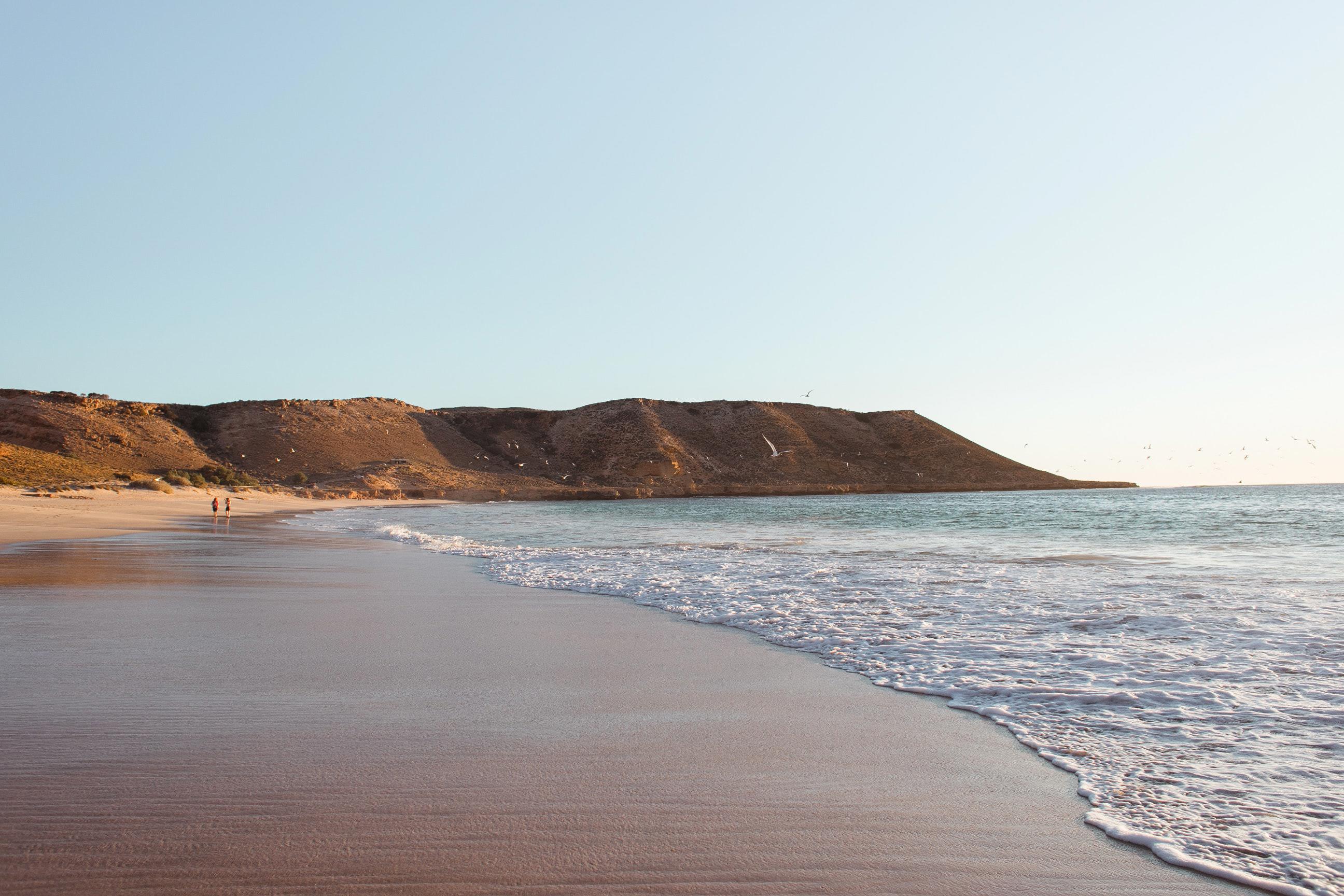
Australia is graced with some of the most beautiful beaches in the world so it’s no wonder Aussies love nothing more than a day at the beach. Unfortunately, the ocean is home to many creatures that may be harmful and others that have the ability to be deadly.
But, as a fearless nation, it’s unlike an Aussie to let this come between them and our stunning shorelines. If you’re one of many who love nothing more than to lap up the sun, sand, water and waves then it’s important you know how to apply First Aid for a jellyfish sting and other marine stings, as they’re the most common injury to occur on your day at the beach.
Jellyfish Sting And Other Stings – The Facts
Australia’s infatuation with our beaches grows stronger every year, with the iconic coastlines hosting some of our fondest memories with family and friends. But the picturesque locations aren’t always filled with smiling faces and intoxicating laughter when you look back on your favourite beach experiences.
One of the most common injuries to occur at an Australian beach is the ever-dreaded jellyfish sting, along with other marine stings. A recent report suggests several hazards come to mind when thinking of the coast, included in these is tropical marine stingers (71%)1. Unfortunately, these hazards are largely ignored by beach goers, suggesting visitors are unprepared when confronted with these dangers.
Irukandji syndrome – Signs and Symptoms
If you’re stung by a certain jellyfish, you may suffer from Irukandji syndrome. In this instance, you may feel a mild pain at the sting site and develop a goosebump-like skin reaction. In rare instances, the sting may result in cardiac arrest, if this does occur CPR and defibrillation must be provided immediately. Other symptoms include:
- severe limb, abdominal and back pain
- anxiety
- headache
- vomiting
- profuse sweating
- sometimes difficulty breathing
- very rapid heart rate
- high blood pressure
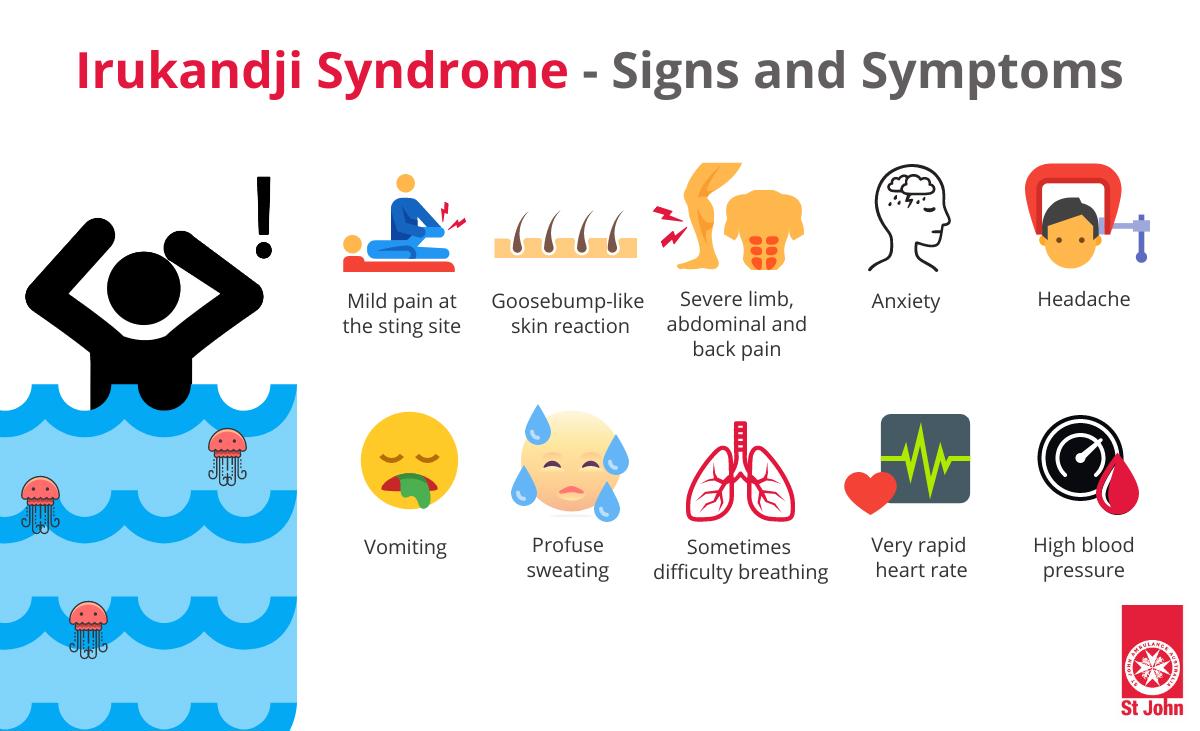
First Aid For Box Jellyfish, Irukandji And Sea Anemone Stings
- Follow DRSABCD (Check the water before entering)
- Call triple zero (000) for medical assistance
- Reassure the casualty
- Do not let casualty rub the stung area
- Pour a liberal amount of vinegar over the area for a minimum of 30 seconds (the vinegar offsets the stinging cells and prevents additional envenomation)
- Apply a cold pack if possible after flushing the sting area with vinegar
Do NOT apply fresh water to the sting, this will cause additional nematocyst discharge from the stings
- If you do not have access to vinegar, remove any remaining tentacles with an object (do not use your hand) and wash with seawater
- Remain with the casualty until medical assistance arrives
- Be ready to provide CPR if required
- Keep the casualty in still position to decrease the possibility of toxins spreading
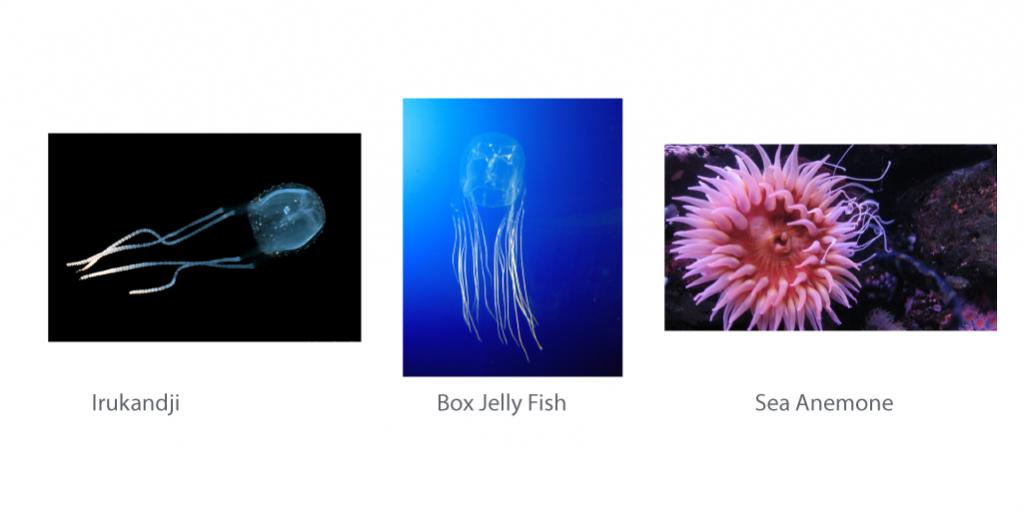
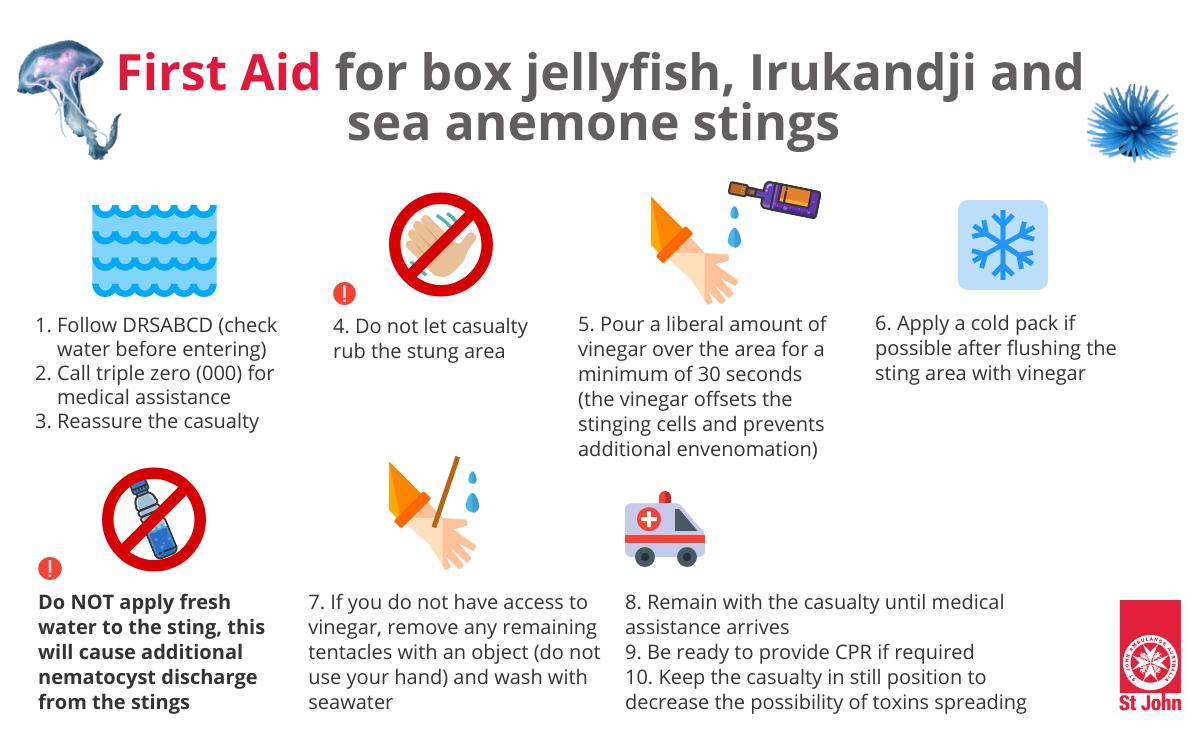
First Aid For Non-Tropical Minor Jellyfish Stings
- Rest and reassure the casualty
- Ensure the casualty does not rub the stung area
- Remove any remaining tentacles (can use fingers)
- Rinse stung area with seawater to remove any invisible sting cells (do NOT apply fresh water)
- Put the stung area in hot water (as hot as the casualty can tolerate without suffering a burn)
- If the pain does not ease from the application of hot water, or if you do not have access to hot water, apply a cold pack to ease pain
First Aid For Bluebottle Sting
- Remove any tentacles (can use fingers)
- Flush stung area with seawater to remove any remaining stinging cells
- Put the stung area in hot water (as hot as the casualty can tolerate without suffering a burn)
- If the pain does not ease from the application of hot water, or if you do not have access to hot water, apply a cold pack to ease pain

First Aid For Spine And Barb Injuries From Stonefish, Catfish and Crown-Of Thorns Starfish
- Follow DRSABCD
- Reassure the casualty
- If the wound is on a limb, remove any remaining sting barbs from the wound
- Put the stung area in hot water (as hot as the casualty can tolerate without suffering a burn)
- Call triple zero (000) for medical assistance
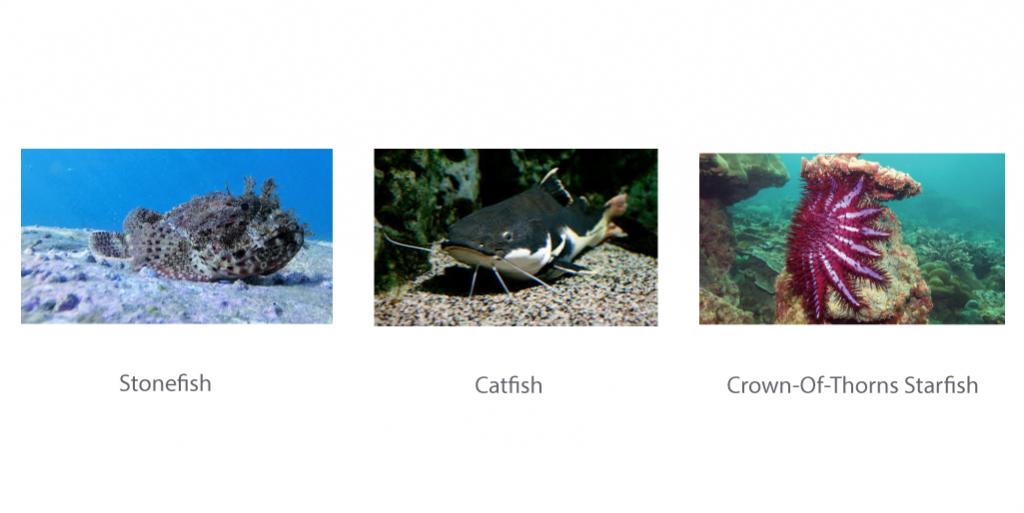
Management Of Injuries From A Stingray
- Follow DRSABCD
- Stop any severe bleeding by applying a bandage and pressure to the wound
- Do NOT remove any embedded spines
- If the casualty has been stung on the hand, arm, leg or foot, ensure bleeding has stopped before inserting the body part into hot water (as hot as the casualty can tolerate without suffering a burn). Test the water with other hand or foot to ensure it is tolerable
- Call triple zero (000) and wait for medical assistance
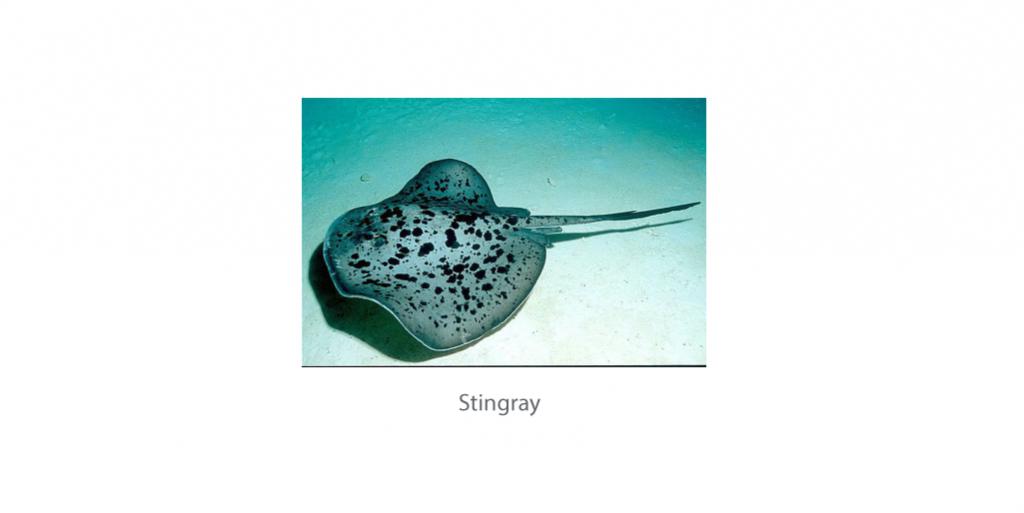
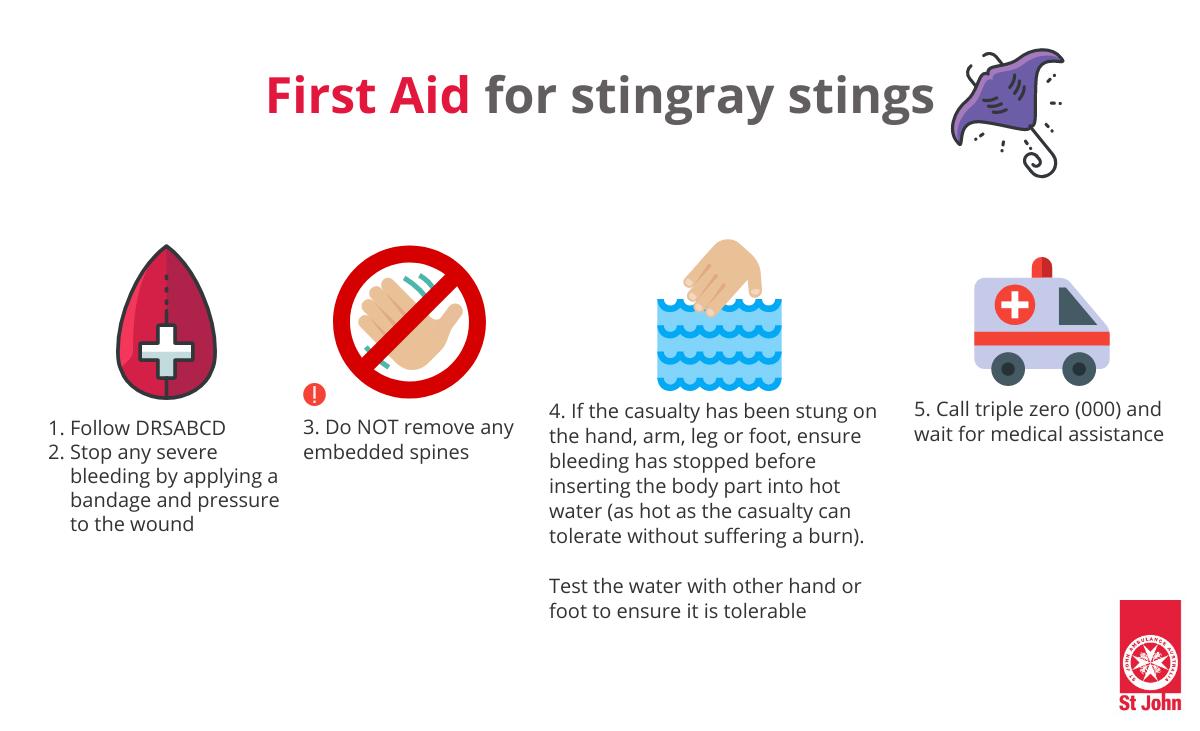
What If You Don’t Know What Stung You?
Sometimes, the water isn’t clear, or you swim away before you think to look and you don’t know what exactly stung you. When this is the case the safest thing to do is the following:
- Follow DRSABCD
- Flush the area with sea water
- Apply a pressure bandage to immobilise the wound
- Find the local lifesaver and ask for their opinion
- Call triple zero (000) and wait for medical assistance if advised by the local lifesaver
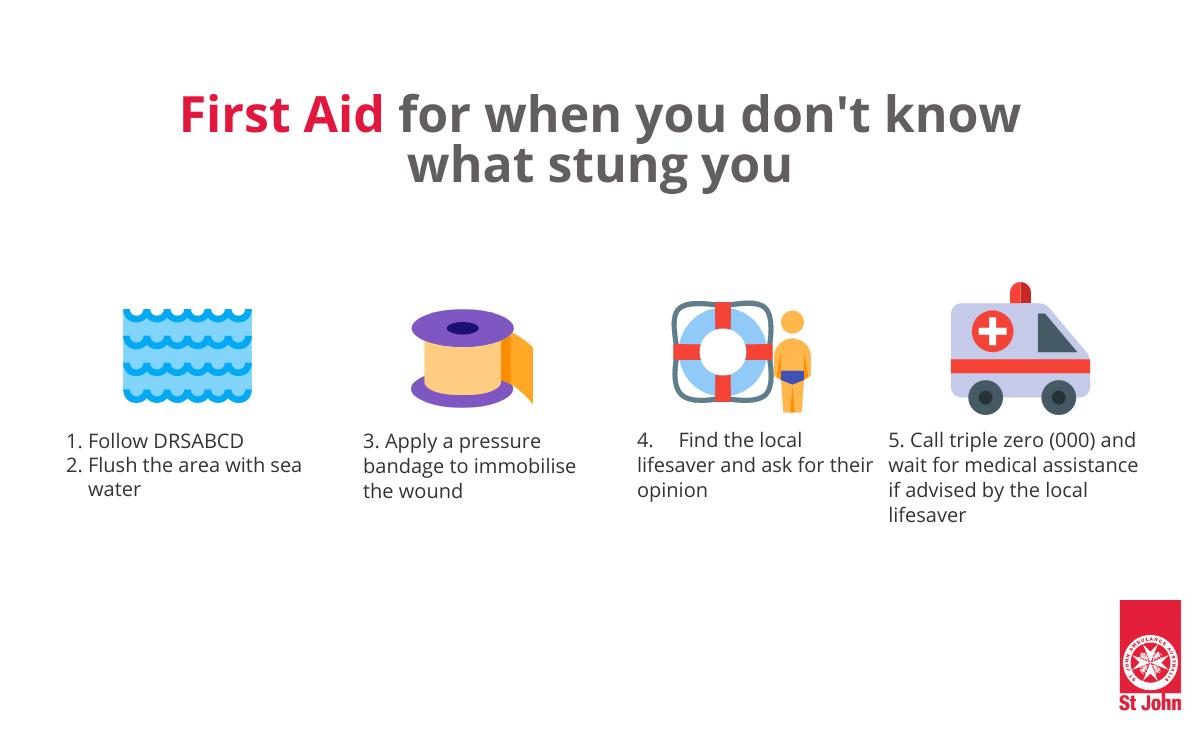
*the pressure immobilisation method can also be used for the Blue Ringed Octopus and Cone Shell
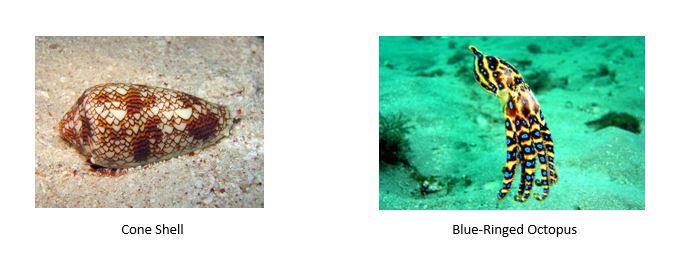
Additionally, if you’re unsure, you should manage the situation based on:
- The circumstances of the bite or sting (geographical location and the activity of the casualty)
- Signs and symptoms (including what the site of the sting looks like; e.g. jellyfish stings have a distinctive look, they commonly leave a “print” of the tentacle with red, brown, or purplish track marks along the skin.)
With summer about to reach its peak, the number of people visiting the beach is at an all-time high. Whether it’s you, a family member, friend or stranger on the beach who suffers from a sting on your day out, if you have the knowledge of how to apply First Aid for a jellyfish sting or other marine stings, you can provide calm and reassurance in a stressful situation and ensure the casualty is provided with the best treatment possible to minimise pain and damage.
Prompt and effective first aid for jellyfish stings can significantly alleviate pain and prevent serious complications. Always be prepared and know the local jellyfish species when swimming in coastal areas.
References
- NSW COASTAL SAFETY REPORT 2023, p.13. Available at: New-South-Wales-Coastal-Safety-Report-2023.pdf

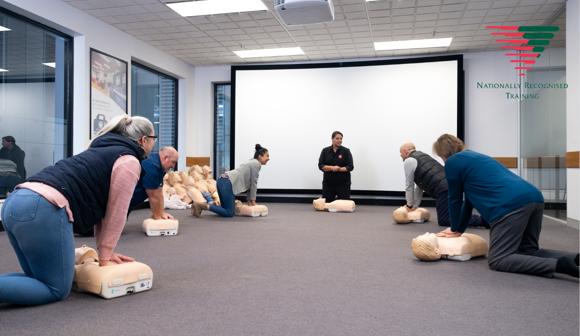
PROVIDE FIRST AID
Learn how to manage a range of common first aid scenarios.
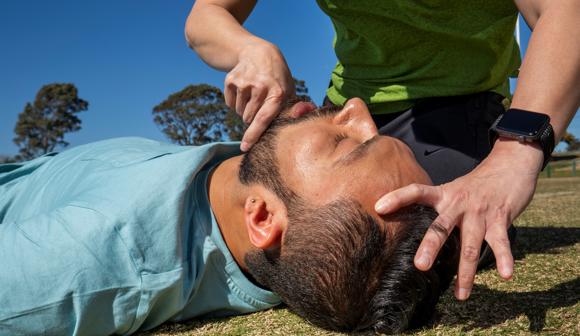
PROVIDE FIRST AID IN REMOTE SITUATIONS
Learn how to provide First Aid in remote areas where access to medical aid is difficult or delayed, including alpine, desert, marine, rural and tropical environments.
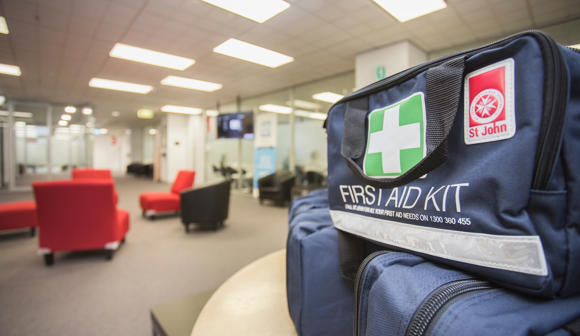
DO YOU HAVE THE RIGHT FIRST AID KIT FOR YOUR HOME, SCHOOL OR WORKPLACE?
St John has a range of First Aid products to suit any situation.
